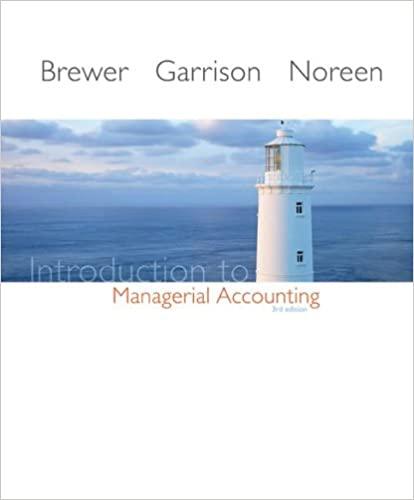Answered step by step
Verified Expert Solution
Question
1 Approved Answer
The company is Tesla based off last two year financial statements. Consolidated Balance Sheets - USD ($) $ in Thousands Dec. 31, 2018 Dec. 31,
The company is Tesla based off last two year financial statements.
| Consolidated Balance Sheets - USD ($) $ in Thousands | Dec. 31, 2018 | Dec. 31, 2017 |
|---|---|---|
| Current assets | ||
| Cash and cash equivalents | $ 3,685,618 | $ 3,367,914 |
| Restricted cash | 192,551 | 155,323 |
| Accounts receivable, net | 949,022 | 515,381 |
| Inventory | 3,113,446 | 2,263,537 |
| Prepaid expenses and other current assets | 365,671 | 268,365 |
| Total current assets | 8,306,308 | 6,570,520 |
| Property, plant and equipment, net | 11,330,077 | 10,027,522 |
| Intangible assets, net | 282,492 | 361,502 |
| Goodwill | 68,159 | 60,237 |
| MyPower customer notes receivable, net of current portion | 421,548 | 456,652 |
| Restricted cash, net of current portion | 398,219 | 441,722 |
| Other assets | 571,657 | 273,123 |
| Total assets | 29,739,614 | 28,655,372 |
| Current liabilities | ||
| Accounts payable | 3,404,451 | 2,390,250 |
| Accrued liabilities and other | 2,094,253 | 1,731,366 |
| Deferred revenue | 630,292 | 1,015,253 |
| Resale value guarantees | 502,840 | 787,333 |
| Customer deposits | 792,601 | 853,919 |
| Current portion of long-term debt and capital leases | 2,567,699 | 796,549 |
| Current portion of promissory notes issued to related parties | 100,000 | |
| Total current liabilities | 9,992,136 | 7,674,670 |
| Long-term debt and capital leases, net of current portion | 9,403,672 | 9,418,319 |
| Deferred revenue, net of current portion | 990,873 | 1,177,799 |
| Resale value guarantees, net of current portion | 328,926 | 2,309,222 |
| Other long-term liabilities | 2,710,403 | 2,442,970 |
| Total liabilities | 23,426,010 | 23,022,980 |
| Commitments and contingencies (Note 17) | ||
| Redeemable noncontrolling interests in subsidiaries | 555,964 | 397,734 |
| Convertible senior notes (Note 13) | 70 | |
| Stockholders' equity | ||
| Preferred stock; $0.001 par value; 100,000 shares authorized; no shares issued and outstanding | ||
| Common stock; $0.001 par value; 2,000,000 shares authorized; 172,603 and 168,797 shares issued and outstanding as of December 31, 2018 and 2017, respectively | 173 | 169 |
| Additional paid-in capital | 10,249,120 | 9,178,024 |
| Accumulated other comprehensive (loss) income | (8,218) | 33,348 |
| Accumulated deficit | (5,317,832) | (4,974,299) |
| Total stockholders' equity | 4,923,243 | 4,237,242 |
| Noncontrolling interests in subsidiaries | 834,397 | 997,346 |
| Total liabilities and equity | 29,739,614 | 28,655,372 |
| Operating Lease Vehicles [Member] | ||
| Current assets | ||
| Operating lease net | 2,089,758 | 4,116,604 |
| Solar Energy Systems [Member] | ||
| Current assets | ||
| Operating lease net | $ 6,271,396 | $ 6,347,490 |
Component III Instructions: Students must submit a document (Word, .rft only) that provides a narrative analysis of the results of their ratio calculations. Narratives should include (6 points each including following format and length requirements):
- at least one ratio from each category (liquidity, asset management, debt management, profitability, and market value)
- a comparison of the results of the two fiscal years for the ratios chosen (i.e., increase, decrease, ideas as to why this might have occurred)
- a comparison to the industry average for the ratios chosen (i.e., how the company compares to the industry and what this means for the company)
- What risk is the company facing? Is this true for the entire industry? How can the company mitigate this risk? What is the industry Beta and the company's Beta?
- recommendations for individuals who may be considering investing in the chosen company
- Given the model of valuation is the company priced fairly? What recommendations would you make to increase the value of the company (be thorough make specific recommendations tied back to the company's stated financial goals).
- Assume that you were given an early inheritance of $50,000 and on January 2, 2017, you used the money to invest in your chosen company's stock. You held the company's stock during 2017, selling all of your shares on December 31, 2017. Answer the following:
-
- How many shares did you purchase on January 2, 2017?
- What was the initial purchase price per share of stock?
- Did you earn any dividends during 2017? Cash or stock? What was the value of your dividends? Would you have received a stock-split or been part of a repurchase program?
- At what price per share did you sell your stock at on December 31, 2017?
- Did you make any money on your investment? If so, how much? If not, how much did you lose?
Step by Step Solution
There are 3 Steps involved in it
Step: 1

Get Instant Access to Expert-Tailored Solutions
See step-by-step solutions with expert insights and AI powered tools for academic success
Step: 2

Step: 3

Ace Your Homework with AI
Get the answers you need in no time with our AI-driven, step-by-step assistance
Get Started


